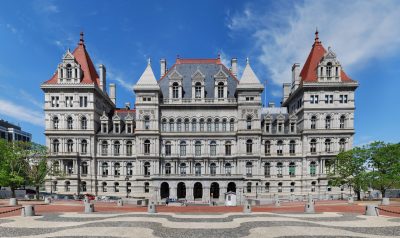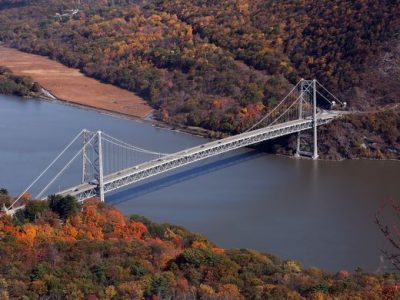
The State budget has been passed. There is light at the end of tunnel. The world is opening up. What better time to look at history-related legislation and see what has happened during the lost year! Below lower are various bills identified by their Senate number and a description. The major new one concerns the 250th anniversary of the American Revolution. Some of the older ones relate to anniversaries from 1619 to Juneteenth.
S9031 American Revolution 250th Commission
This proposed bill has been in the Senate Rules Committee since October 5, 2020. Creating this Commission is a prerequisite for federal funding which will be funneled through state commissions. The bill provides detailed definition of terms and the specifications of 31 people identified by function or position for the commission. The people include
– Commissioner of the Commission
– Commissioner of the Department of Education
– President of Empire State Development plus representatives of the ten regions
– Director of New York State Military Museums
– 5 directors of heritage parks and areas
– 9 representatives of various Indian Nations
– Humanities New York
– Association of Public Historians of New York State
– Preservation League of New York State.
Responsibilities include but are not limited to:
– conduct historical, economic, and cultural studies
– conduct education programs
– make recommendations on heritage organizations, historical signs, and monuments
– protect and promote the heritage resources.
There will be federal funding and funding from the State as well one presumes. The expiration date for the Commission is December 31, 2033. That date means the last major event probably will be Evacuation Day, November 25, 2033 in lower Manhattan. Just when events in Massachusetts will be wrapping up, events in New York will be taking off. These include the Battle of Saratoga, the Sullivan-Clinton Campaign, Benedict Arnold, Rochambeau, and Evacuation Day. New York will be observing the 250th for years to come. What should we be doing now for the pre-July 4, 1776 250th?
S6948 400 Years African-American History Commission
As the 250th Commission heads towards likely approval at some [because it is required to obtain federal funding], it is worth considering the status of the 400 Year commission for 1619. That proposed commission has been the subject of several blogs already (Slavery Quadricentennial: The 400 Years of African-American History Commission). It was finally signed into law on February 16, 2020, about six months after the August 2019 anniversary. Apparently the now-15 Commissioners had been chosen and it was only a question of arranging the photo-op to announce the launching. We all remember what happened in March 2020. Suffice it to say the 400 Year Commission is on hiatus. The original expiry date was pushed back from June 1, 2020 to June 1, 2021 which is in a few weeks. So far there is no indication of pushing back the date again. I do have a copy of the Memorandum of Support from sponsor Senator Comrie from February 2020 when I stopped by his office in Albany. That document was marked up to shift the expiry date to June 1 2022. However the New York State Senate website still has June 1 this year so time is running out.
S8598 Juneteenth Public Holiday
This bill was signed into law last July 22, 2020, shortly after the events in Tulsa. So next month will be the first observance of it in the State as a public holiday. Whether it is a public holiday like New Year’s Day, Christmas, and Thanksgiving or like Flag Day or Lincoln’s Birthday, and George Washington’s Birthday remains to be seen. This date refers to an event in Texas and not New York.
SXXXX 1827 Bicentennial 1827 Commission
Speaking of New York, the bill I initiated and helped write for the bicentennial in 2027 of the end of slavery in New York State never made it to the Senate (1827 Freedom Bicentennial Commission Covid-19 Casualty… This Year). It appears to have been a casualty of the Covid pandemic and has vanished from sight.
It should be noted that there are other upcoming anniversaries with state-wide implications including the return of Lafayette (1824) and the Indian Citizenship Act (1924) worthy of remembrance and celebration. These are in addition the bicentennial of the building of the Erie Canal (ongoing, culminating in 2025) and the centennial of the New York State Council of Parks created by legislation adopted on April 18, 1924.
S3951 Civic Education Fund
This bill was vetoed on December 13, 2019. I respectfully submit that given the insurrection on January 6, 2021, there is a desperate need for civics education in the state and the country. There is an urgent need to revisit the issue of civics in the school curriculum.
By coincidence, as I am writing this blog, I received an email from the Preservation League of New York State containing Preservation updates on State legislation. I include two bills below.
Support for Legislation Relating to Operations and Preservation of the National Historic Landmark New York State Canal System Memorandum of Support A.7044 (Buttenschon)/S.5958 (May)
We commend the New York Power Authority and New York State Canal Corporation for their ongoing restoration, maintenance, and stewardship of our National Historic Landmark canal system. This bill supports their work while providing important consistency for those who use the canal, whether for recreation, tourism, or commercial purposes.
Support to Make Mandatory Quarterly Meetings of the Canal Recreationway Commission
Memorandum of Support A.7045 (Buttenschon)/S.5959 (May)
The Canal Recreationway Commission currently meets subject to the call of the chairperson. By setting a regular quarterly meeting schedule, this bill will establish consistency and give the Commission the tools to focus on important future planning efforts to support our Canal System and chart a new path forward, supporting our National Historic Landmark Canal System’s ability to leverage the economic benefits of tourism, recreation, and commercial use now and into the future.
This brief review of some history-related legislation shows that the time of the advocacy hibernation is over and the history community needs to think about how to organize for legislative action and what action it would like to see.





